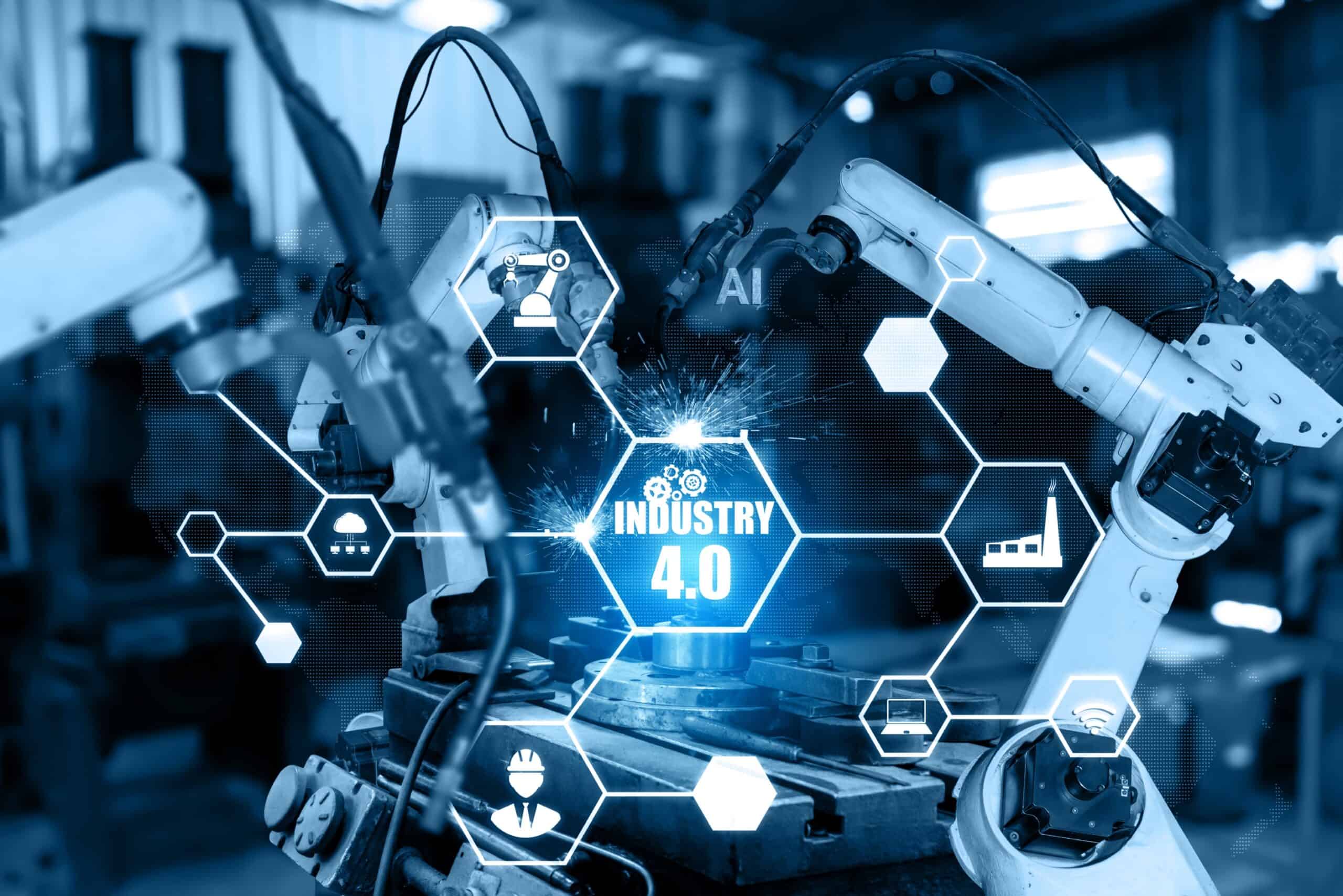
Are you ready to take your manufacturing business to the next level? In today’s digital age, the integration of information technology (IT) and operational technology (OT) is revolutionizing the production and manufacturing industry. This convergence, known as IT-OT convergence, brings together the tools and processes businesses use to collect data (IT) with the tools they use to control physical assets and processes (OT). The result? Improved efficiency, streamlined operations, and a world of possibilities.
In this eBook, we will explore the benefits, challenges, and real-world examples of IT-OT convergence in manufacturing. We will also introduce you to NC-Vision’s True No-Code Platform, a game-changing solution that empowers businesses to seamlessly integrate IT and OT processes, driving efficiency, and innovation. So, if you’re ready to unlock the full potential of your manufacturing operations, keep reading.
IT, OT, and Convergence
IT refers to the technology, equipment, personnel, and resources businesses use to store and utilize data across the business. This includes servers, computers, applications, and IT professionals.
On the other hand, OT encompasses the system businesses use to manage physical assets, such as manufacturing equipment, vehicles, HVAC systems, and specialized machinery.
Traditionally, IT and OT have operated in separate silos, with limited interaction between the two. However, with the rise of the Internet of Things (IoT) and connected devices, the convergence of IT and OT has become increasingly important. Connected devices use sensors to collect real-time data from equipment, while actuators control machinery and trigger actions based on changes in the collected information. As a result, IT and OT are converging, allowing businesses to leverage IoT to automate and inform operations.
Benefits of IT-OT Convergence
The integration of IT and OT brings numerous benefits to the manufacturing industry. Let’s explore some of the key advantages:
- Opportunities for Automation: IT-OT convergence enables businesses to automate processes based on specific conditions, reducing reliance on human operators and minimizing bottlenecks. This automation improves efficiency, reduces costs, and allows operations teams to manage more resources simultaneously.
- Better Visibility into Operations: Real-time data collection and analysis provide operations technicians with the visibility they need to react quickly to problems and prevent larger issues. By establishing thresholds and recognizing patterns, businesses can implement predictive maintenance strategies, reducing downtime and optimizing equipment performance.
- Lower Costs: Automation and predictive maintenance not only improve efficiency but also help lower costs. By reducing manual facilitation of operations, businesses can save time and resources. Additionally, preventing unplanned downtime through predictive maintenance avoids costly disruptions to daily operations.
- Potential for New Services or Pricing Models: IT-OT convergence opens up possibilities for offering different pricing structures and services based on equipment usage. Instead of requiring customers to purchase equipment outright, businesses can provide subscription-based models tailored to their short-term needs or limited budgets.
Key Challenges of IT-OT Convergence
While IT-OT convergence offers significant benefits, there are also challenges that businesses must overcome. These challenges include:
- Technology Silos: IT and OT systems often operate based on different protocols and standards. OT systems can be highly splintered, involving various niche applications and protocols. Legacy systems and outdated technologies further complicate integration efforts. However, emerging technologies, such as digital twins and advanced analytics, can help bridge these technology silos.
- Separate Skill Sets: IT and OT teams have different methods, cultures, and priorities. Bridging the gap between these teams requires cross-skilling and collaboration. Companies may need to establish embedded experts or cross-functional IT-OT teams to ensure seamless integration and cooperation.
- Security: As IT and OT converge, the expanded interconnectedness of devices and processes increases the risk landscape. Businesses must address the security of the converged system holistically, considering open architecture, new APIs, and interconnected devices. Training staff and reassessing processes are essential to mitigate security risks effectively.
- Organizational Readiness: IT-OT convergence requires alignment throughout the entire organization. This involves not only strategy and culture but also the integration of complex technologies and processes. Companies must have a clear vision of how convergence will affect their organizations and build their strategies accordingly.
Disadvantages of Keeping IT & OT Separate
While the challenges of IT-OT convergence may seem daunting, keeping IT and OT separate also has disadvantages. These disadvantages include:
- Limited Efficiency and Agility: Operating IT and OT as separate entities limits the efficiency and agility of manufacturing operations. Siloed processes and lack of integration hinder real-time decision-making and prevent businesses from fully leveraging data insights.
- Missed Innovation Opportunities: By keeping IT and OT separate, businesses miss out on the innovation opportunities that come with IT-OT convergence. IoT, smart sensors, and edge computing offer powerful tools for optimizing manufacturing processes and driving digital transformation.
- Inefficient Resource Allocation: Separate IT and OT processes can lead to inefficient resource allocation. Without integration, businesses may waste time, money, and resources on manual facilitation of operations and unnecessary maintenance.
IT-OT Convergence in Manufacturing
Smart Factories: Leveraging sensors and data analytics for real-time monitoring and automation, reducing waste and improving product quality.
Predictive Maintenance: Using data from OT systems to predict equipment failures before they occur, minimizing downtime.
Supply Chain Optimization: Integrating IT systems with OT data to improve inventory management and demand forecasting.
Conclusions
IT-OT convergence is not just a technological upgrade; it’s a strategic transformation that positions your manufacturing operations for the future. By embracing this integration, you can unlock efficiencies, reduce costs, and stay ahead of the competition. And with NC-Vision’s True No-Code Platform, the journey towards a fully integrated production environment is smoother and more accessible than ever.g through fully graphical methods specifically designed for manufacturing solutions.
NC-Vision’s True No-Code Platform is designed to make IT-OT convergence accessible and practical for manufacturers of all sizes. Our platform offers:
- User-Friendly Interface: Empower your teams to create solutions without the need for coding expertise.
- Secure Integration: Seamlessly connect legacy OT equipment with modern IT systems while maintaining high-security standards.
- Customization: Tailor solutions to your unique operational needs, ensuring that IT-OT convergence works for you
The convergence of IT and OT in manufacturing, powered by no-code solutions like those offered by NC-Vision, is not just a trend—it’s the future. Are you ready to take the first step?



Made for production, manufacturing, and beyond:
Discover how NC-Vision can help you bridge the gap betwwn IT and OT to support data-driven decisions and increase business efficiency. Don’t let complexity hold you back. Schedule a free platform tour today and see the difference for yourself.
NC-Vision is committed to helping the manufacturing industry make the most of no-code software development. We offer a range of no-code solutions that enable companies to quickly and easily create custom solutions that are tailored to their needs. Our tools allow companies to create solutions faster, more cost-effectively, and with more customization than ever before.












